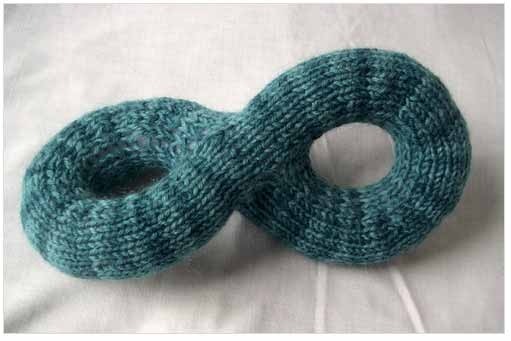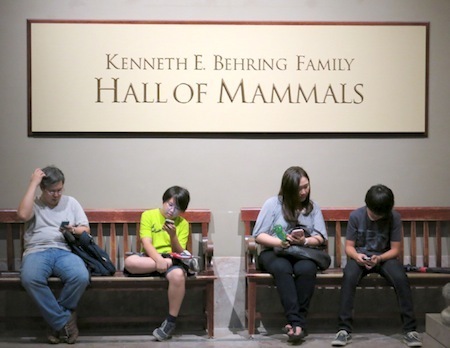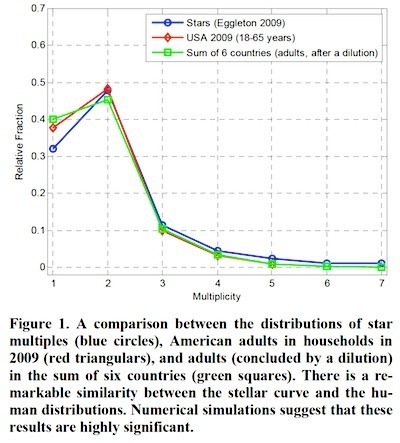Marc Abrahams's Blog, page 470
August 19, 2013
Mammals on Display
Kees Moeliker, curator of the Natural History Museum Rotterdam, is visiting Washington DC. He reports:
I arrived in Washington at the end of the afternoon, and found out the National Museum of Natural History was open till 7:30 pm. So I had a full hour to wander around the exhibition halls. I especially liked the way the museum presents the (recent) mammals. The human species was definitely the best part:

Eyebrows Lasers Dangers
 If one was contemplating methodologies for the permanent removal of one’s eyebrows, and one was inclined towards a laser – specifically a 755 nanometre Alexandrite laser – then one might be advised to think again. A 2011 case report in the medical journal Clinical Ophthalmology describes a scenario involving a 41-year-old man, who :
If one was contemplating methodologies for the permanent removal of one’s eyebrows, and one was inclined towards a laser – specifically a 755 nanometre Alexandrite laser – then one might be advised to think again. A 2011 case report in the medical journal Clinical Ophthalmology describes a scenario involving a 41-year-old man, who :
“…presented with bilateral eye pain and mild photophobia 2 days after receiving alexandrite (755 nm) laser epilation of both eyebrows.”
The laser was unequivocally identified as the cause of the damage.
“Conclusion: Laser hair removal of the eyebrows can lead to permanent ocular damage even with eye protection, and should be avoided.”
See: ‘Iritis and iris atrophy after eyebrow epilation with alexandrite laser.’ (Clinical Ophthalmology, Volume 2011:5 pp.1733 – 1735)
Also see: Eyebrows – the dangers (Improbable Research, Mar. 2, 2010)

August 18, 2013
Safety School: Bulletproof Whiteboards
“The University of Maryland-Eastern Shore announced that it is purchasing 200 [bulletproof] whiteboards from Hardwire LLC, a company based in Pocomoke City, Maryland, citing the need for a heightened sense of security in the wake of deadly mass shootings in recent years,” reports CNN.
The manufacturer says its product is “now available in pink, blue, or green!” There is a full specification sheet [PDF], which includes this detail:
The company web site gives this simplified list of features:
Blends well with classroom – no psychological impact on students.
Perfect for highly interactive teaching.
Easy-to-hold handles for portability.
Purchase includes a hook for easy hanging.
Covers the head and torso.
Ballistic protection per National Institute of Justice standards.
Absorbs multiple magazines of ammunition from any handgun or shotgun without ricochet or injury.
The manufacturer also produced a promotional video:
The bulletproof whiteboard is “18 inches x 20 inches in size.” It thus offers possibly full-body protection to anyone who is a maximum of 20 inches in height.
The university has more than 4000 students. Each of the 200 bulletproof whiteboards will protect 20 students, statistically speaking.
(Thanks to investigator Mason Porter for bringing this to our attention.)
BONUS: “This kid at my school makes chain mail, wears it and refuses to take it off when asked by teachers” [REDDIT question]

An alternative source of ingredients to make soap
Romeo Vitelli writes about the “Corregio Soapmaker”:
…Leonarda Cianciulli, a.k.a. the “Soap Maker of Corregio” and her bizarre criminal career. While almost unknown outside of Italy, Leonarda’s career as a serial killer is still unparalleled in many ways, both for her unique method of concealing bodies and her rather odd motive for killing….
Her first victim was a 50-year-old spinster named Faustina Setti…. According to the official statement [Cianciulli] gave to police afterward,
I threw the pieces into a pot, added seven kilos of caustic soda, which I had bought to make soap, and stirred the whole mixture until the pieces dissolved in a thick, dark mush that I poured into several buckets and emptied in a nearby septic tank. As for the blood in the basin, I waited until it had coagulated, dried it in the oven, ground it and mixed it with flour, sugar, chocolate, milk and eggs, as well as a bit of margarine, kneading all the ingredients together. I made lots of crunchy tea cakes and served them to the ladies who came to visit, though Giuseppe and I also ate them.
The story has elements in common with two modern fictional works, Fight Club and Sweeney Todd. Some day, perhaps someone will write an opera about the Corregio Soapmaker (it would almost have to be called The Soap Opera). Behold a bit of Sweeney Todd:
(Thanks to investigator Jennifer Ouellette for bringing this to our attention.)
BONSU: One person’s assessment of How to make Fight Club soap
BONUS: Two other persons’ assessment:

The stars in the heavens, the adults in the house
A new paper relates the apparent clumpings of stars to those of humans. Astronomer Alon Retter, who earlier posited a mathematical similarity between astronomical objects and human children, gives full details of his work:
“An Intriguing Correlation between the Distribution of Star Multiples and Human Adults in Household,” Alon Retter, International Journal of Astronomy and Astrophysics, Vol. 3 No. 2, 2013, pp. 153-160. Retter writes:
“It is a known fact that like people, some stars are singles, many others tend to couple in binaries, and fewer are in triples etc. The distribution of multiplicity in the 4559 brightest nearby stars was matched with that of human adults in household in six countries, in which this information could be dug and estimated. A strong resemblance between the two curves is evident. Monte Carlo simulations suggest that this result is significant at a confidence level higher than 98%. Apparently, there should be no connection between the two populations, thus this striking result may supply some clues about the way Nature works. It is noted that extended versions of this work were proposed three years ago, and two predictions of this absurd model have already been verified.”
Here’s further detail:

August 17, 2013
How does one contemplate a mess?
Ig Nobel Prize winner Rolf Zwaan looks at published studies about messiness — one of which itself was part of a messy situation — and explains how you might begin making sense of such things:
50 Questions About Messy Rooms and Clean Data
…Not only 20-year-old students hypothesize about the effects of environments on thought; social psychologists do too. My daughter’s hypothesis is straightforward: messy environments are distracting. The social psychologists’ hypotheses take us a little further afield. For example:Messy environments promote stereotyping. The paper describing research into this hypothesis was co-authored by Diederik Stapel and has been retracted. Another hypothesis is that messy environments promote a longing for simplicity. The paper describing research into this hypothesis was co-authored by Dirk Smeesters and has been retracted.
Now there is a new study on messiness. It is about to be published in Psychological Science and has already received a lot of press coverage. The main findings are claimed to be that neat environments promote giving to charity and healthy eating behavior whereas messy environments promote creativity.
While I was reading the article, many questions arose. Given their obviousness, I’m surprised that these questions did not occur to the researchers who wrote the paper, the reviewers who commented on the manuscript, the editor who accepted the manuscript for publication, and the journalists who wrote breathless news stories about it. So in the rest of this post I’m just going to list these questions. I will not focus on theoretical aspects of the study (or the lack thereof), which would have made the list even longer….[read the entire essay]

August 16, 2013
Personifications of Death and Death Anxiety Survey
A look back at yet another presumably surprising discovery:
“Personifications of Death and Death Anxiety,” Richard Lonetto, Journal of Personality Assessment, vol. 46, no. 4, 1982. The author, at the University of Guelph, explains:
“University students, graduate nursing students, and funeral service students completed Templer’s Death Anxiety Scale (DAS) and a Death Personification Exercise (DPE). Responses… suggest that: (a) perceptions of death as a gay deceiver were related to a cognitive-affective component of death anxiety; while images of death as a gentle comforter or macabre figure were related to an awareness of the passage of time; and (b) reactions to death and descriptions of the activities of death were associated with concern about physical alterations”

Rocket, plus cows [video]
Knitting Mathematics
 The recent Improbable article : ‘Welcome to My Brain‘ profiled the work of Dr. Anne Beate Reinertsen PhD, whose paper ‘Welcome to My Brain’ explained the process of ‘Neuroknitting’ – in particular the knitting of Möbius Bands. In this respect the paper cites the work of Dr. Sarah-marie Belcastro (Research Associate at Smith College and a guest faculty member at Sarah Lawrence College), who is a leading proponent mathematical knitting, and who provides instruction in the tricky concept of knitting Möbius Bands here. The page forms part of Dr. Sarah-marie Belcastro’s extensive website which is not only devoted to Mathematical Knitting in general (Hyperbolic planes, pseudospheres, orthogonal double-holed tori [pictured above] , Y x I twist cowls and many more) but also examines Discrete Mathematics with Ducks.
The recent Improbable article : ‘Welcome to My Brain‘ profiled the work of Dr. Anne Beate Reinertsen PhD, whose paper ‘Welcome to My Brain’ explained the process of ‘Neuroknitting’ – in particular the knitting of Möbius Bands. In this respect the paper cites the work of Dr. Sarah-marie Belcastro (Research Associate at Smith College and a guest faculty member at Sarah Lawrence College), who is a leading proponent mathematical knitting, and who provides instruction in the tricky concept of knitting Möbius Bands here. The page forms part of Dr. Sarah-marie Belcastro’s extensive website which is not only devoted to Mathematical Knitting in general (Hyperbolic planes, pseudospheres, orthogonal double-holed tori [pictured above] , Y x I twist cowls and many more) but also examines Discrete Mathematics with Ducks.
ALSO Don’t Miss: The work of Vi Hart (resident mathemusician at the Khan Academy) who is a leading expert in Mathematical Balloon Twisting and investigates Möbius Worlds.

August 15, 2013
Another startling study about coffee-drinkers
Many people who drink tremendous amounts of coffee also smoke heavily, and some of them, the men especially, kinda-sorta tend to die a little early, statistically speaking. Maybe they die from the coffee. Maybe they die from the smoking. Maybe they die from something other than the coffee or the smoking. Maybe they die from car crashes or fight wounds or suicide or malaria or the plague. (The study speaks of death only as “all-cause mortality”).
That seems to be what the data say in this newly published study.
Many news reports seem to simplify what the study says. Those news reports seem to imply that the study says: drinking coffee will kill you.
The study is:
“Association of Coffee Consumption With All-Cause and Cardiovascular Disease Mortality,” Junxiu Liu, Xuemei Sui, Carl J. Lavie, James R. Hebert, Conrad P. Earnest, Jiajia Zhang, Steven N. Blair, Mayo Clin Proc., epub August 15, 2013. The authors are at the University of South Carolina, Columbia, Ochsner Medical Center, New Orleans, and the University of Bath, Bath, UK.

Marc Abrahams's Blog
- Marc Abrahams's profile
- 14 followers







